Also known as: Gauge swatch cast-on, Provisional cast on
Context
The basic stranded cast-on provides a cast-on edge that is very stretchy and that does not pull in or pull out the stitches that are knitted from it. It is, however, unattractive and so is most frequently used for gauge swatches.
How to do it
Holding the yarn
The basic stranded cast-on uses two strands of yarn – the tail end and the working yarn. Usually these are the two legs of a loop. The photographs show a dark coloured yarn for the tail end tied to a light coloured yarn for the working yarn. This should make it easier to see how the cast-on is formed.
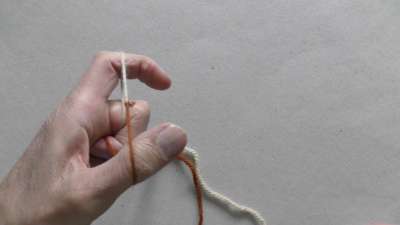
Hold the yarn in your left hand. The tail end should be over your thumb, and the working yarn over your forefinger. Run both yarns across your palm and hold them in place with your other fingers.
When making this cast-on, the tip of the needle always stays between your thumb and forefinger, working only with the yarn stretched between them.
Make the first loop
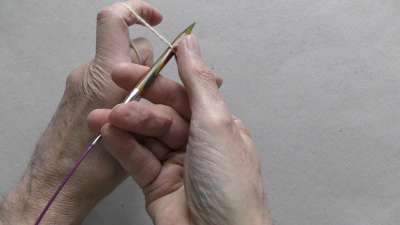
Now you need to make the first loop on the needle.
Hold the needle in your right hand pointing to your right.
Place it under the yarn between your left thumb and forefinger.
Lift and turn the point over the working yarn.
Now you have a loop with the working yarn closest to the tip and holding the tail end in place.
Casting on two stitches
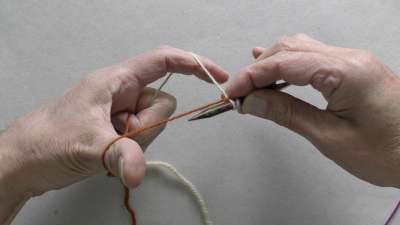
Keep the yarn between your forefinger and thumb tight. Move the tip of the needle toward you, over, and then downwards between you and the tail end (that is held by your thumb), keeping the needle in the “V” between your thumb and forefinger.
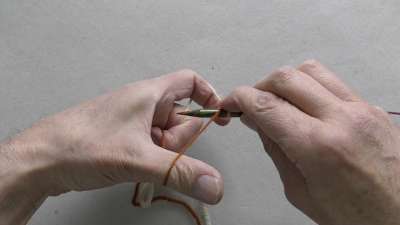
Next move the needle under the far side of the tail end and up, keeping between your thumb and finger.
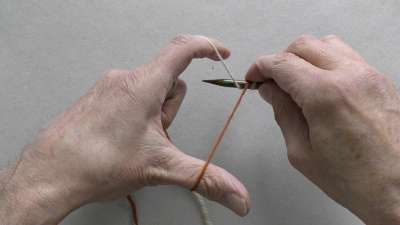
Move the needle over and behind the working yarn, still keeping between your thumb and forefinger.
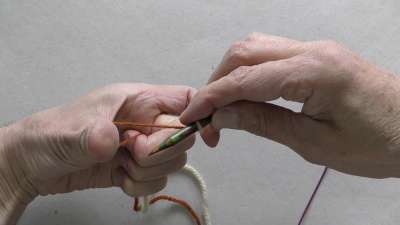
Then move the needle forward and under the part of the tail end that between the needle and your thumb.
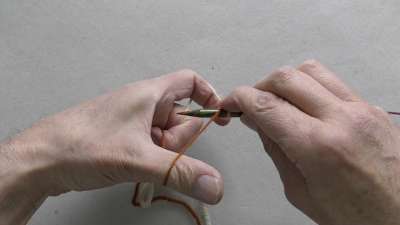
Next bring the needle up and back between your thumb and forefinger. You now have a second loop of the working yarn over the needle that is held in place by the tail end.
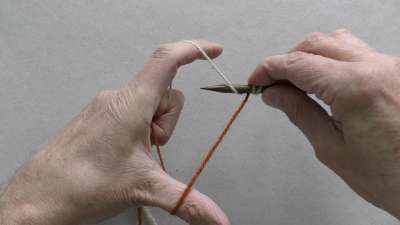
Move the needle under the working yarn between the needle and your forefinger, lift it and move it back to the centre. This makes a yarn-over.
Preparing to knit
Stop casting on when you have enough stitches. The above cast-on sequence creates two stitches, so you will have an odd number of stitches on the needle at the end of each sequence (the original loop plus one pair for each repetition). Stop when you have enough stitches – with one extra if you need an even number.
Turn the needle round and hold it in your left hand.
Using an odd number of stitches
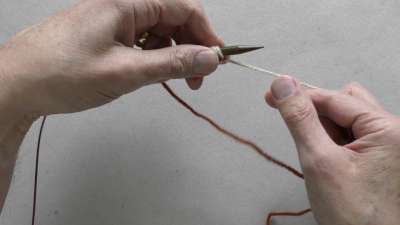
If you need an odd number of stitches you need to trap the working yarn on the needle with the tail end. Move the tail end under the tip of the needle and in front of the working yarn. Hold it in place against the needle with the fingers of your left hand. This will give you a firm loop to knit.
Using an even number of stitches
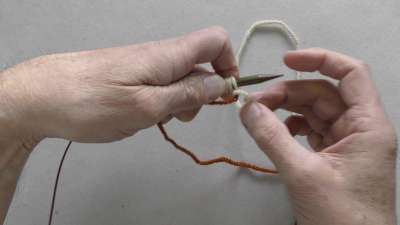
If you need an even number of stitches, you have an extra stitch on your needle. Carefully take the last yarn-over off the needle. The tail end is lying loosely around the working yarn. Hold it against the needle with the fingers of your left hand. This will give you a firm loop to knit.
Now you can start to knit.
What the cast on looks like
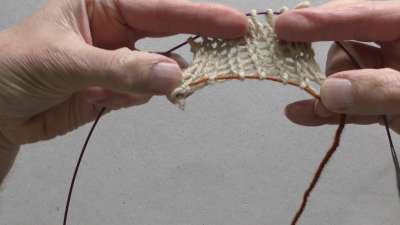
You can see the tail end running through the loops of the stitches so that the stitches can move freely along it. This means that the cast-on edge does not pull on the body of the knitting.
Tip. You can use this cast-on as a provisional cast-on. When you are asked to pick up the provisional stitches, just insert your needle into the loops of the cast-on edge and pull out the strand of yarn that passes through them. If you cast-on using the cable of a circular needle instead of the tail end of the yarn (the one that goes over your thumb) you won’t even need to thread the needle through the loops! However, every other stitch will be reverse mounted, so remember to work those using the leading leg.


